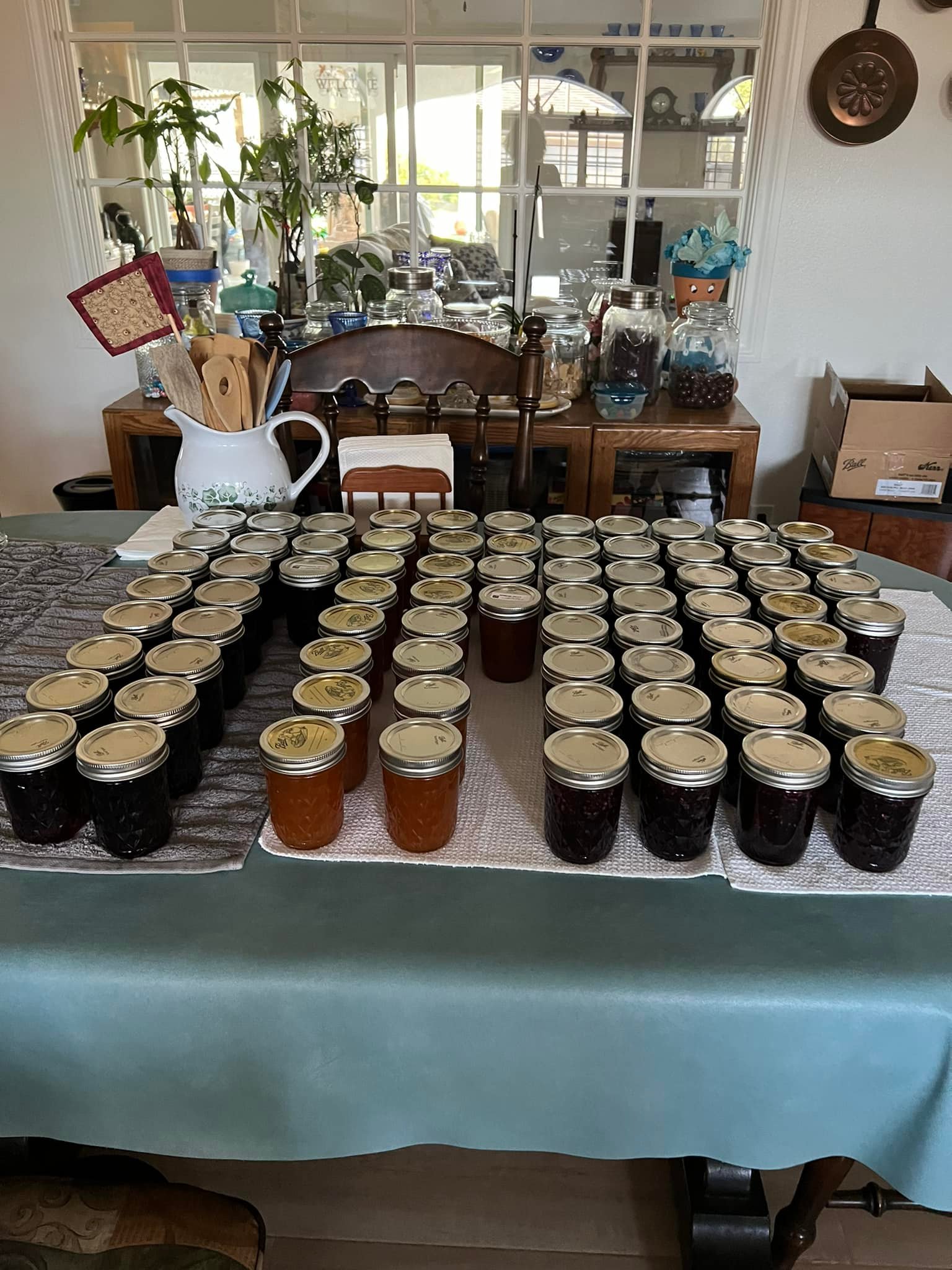Certainly! Here’s a detailed recipe for making pomegranate and aprium jelly that yields about 4-5 half-pint jars. This recipe combines the tartness of pomegranate with the sweet, tangy flavor of apriums, creating a deliciously unique jelly.
Ingredients:
- Pomegranate Juice: 2 cups (preferably freshly squeezed or 100% pure, no sugar added)
- Aprium Puree: 1 cup (see note on preparation)
- Granulated Sugar: 3 cups
- Lemon Juice: 2 tablespoons (about 1 lemon)
- Pectin: 1 packet (1.75 oz or 49 grams of powdered pectin; such as Sure-Jell)
- Butter: 1 tablespoon (optional, to reduce foaming)
- Water: 1/2 cup (for pectin preparation)
Preparation:
- Prepare the Aprium Puree:
- If using fresh apriums, peel and pit them. Chop the fruit into chunks and place them in a blender or food processor. Blend until smooth. You should end up with about 1 cup of aprium puree. If apriums are not in season, you might use apricot puree as an alternative, though the flavor will differ slightly.
- Prepare the Pomegranate Juice:
- If you’re using fresh pomegranates, cut them in half and juice them using a citrus juicer or a pomegranate juicer. Strain the juice through a fine mesh sieve to remove any seeds or pulp. You need 2 cups of juice for this recipe.
- Sterilize Jars and Lids:
- Before starting, sterilize your canning jars and lids. Place them in a boiling water bath for 10 minutes or run them through a hot cycle in the dishwasher. Keep them warm until ready to use.
- Cook the Jelly:
- In a large, heavy-bottomed saucepan, combine the pomegranate juice, aprium puree, and lemon juice. Stir well to mix.
- Add the pectin to the mixture. Stir to ensure the pectin is evenly distributed.
- Place the saucepan over medium-high heat and bring the mixture to a boil, stirring constantly.
- Once the mixture reaches a rolling boil (a boil that doesn’t stop bubbling when stirred), add the granulated sugar all at once. Stir constantly until the sugar is completely dissolved.
- Boil and Test for Doneness:
- Continue to boil the mixture for 1-2 minutes, or until it reaches the gel stage. To test the gel stage, you can use the spoon or sheet test:
- Spoon Test: Place a spoonful of the jelly mixture on a chilled plate and let it sit for a minute. Run your finger through the jelly; it should wrinkle and hold its shape.
- Sheet Test: Dip a cold spoon into the boiling jelly and then pull it out. When you let the jelly drip from the spoon, it should form a sheet and then drop off.
- Continue to boil the mixture for 1-2 minutes, or until it reaches the gel stage. To test the gel stage, you can use the spoon or sheet test:
- Skim Foam and Add Butter:
- If there’s foam on the surface, skim it off with a spoon. Adding a tablespoon of butter to the mixture can help reduce foaming and give a clearer jelly.
- Fill the Jars:
- Pour the hot jelly into the prepared sterilized jars, leaving about 1/4-inch headspace. Wipe the rims of the jars with a clean, damp cloth to remove any residue.
- Place the sterilized lids on the jars and screw on the metal bands until they are fingertip-tight.
- Process the Jars:
- Process the jars in a boiling water bath for 5-10 minutes to ensure they are sealed properly. The water should cover the jars by at least 1 inch.
- Remove the jars from the water bath and let them cool completely on a clean towel or cooling rack.
- Check Seals and Store:
- Once cooled, check the seals by pressing down in the center of each lid. It should not pop back. Store sealed jars in a cool, dark place. Unsealed jars can be refrigerated and used within a few weeks.
Note:
- Aprium Preparation: If you have difficulty finding apriums, you can use a combination of apricot puree and a small amount of plum puree to mimic the flavor profile.
Enjoy your homemade pomegranate and aprium jelly on toast, as a topping for desserts, or as a gift for friends and family!
